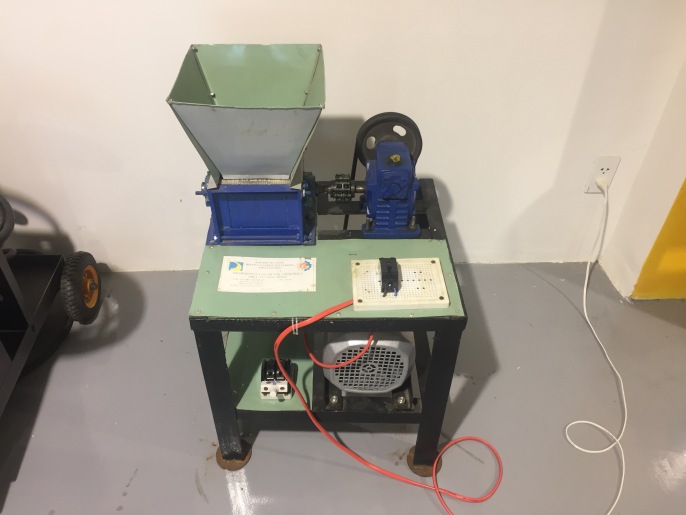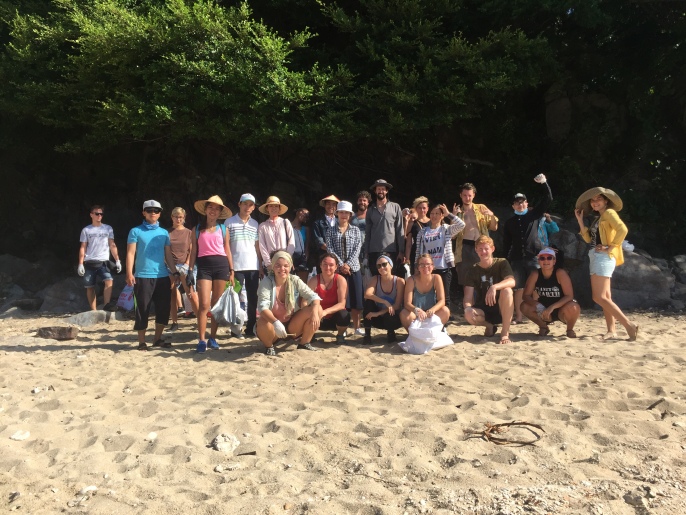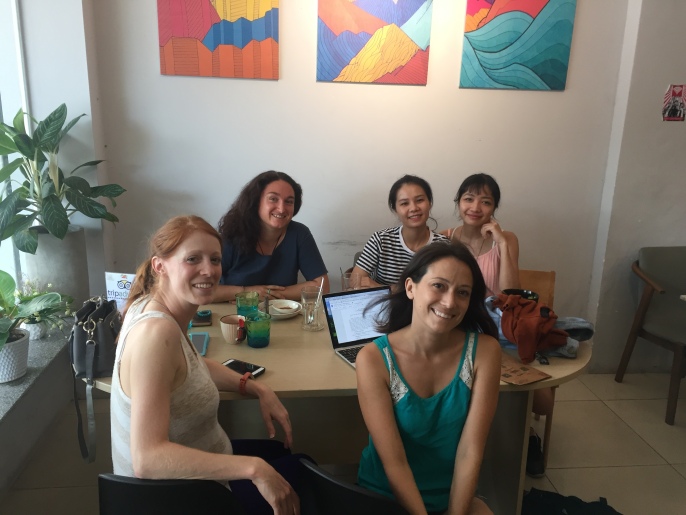We’ve had a busy and productive summer at Precious Plastic Da Nang, so we wanted to share what we’ve been up to.
MACHINES

This Summer kicked off with some really great news for us. Through a charitable donation from the students at Da Nang University of Technology we acquired our shredder. The students built this machine for their end of year project and Professor Haoi Nam Le contacted us to arrange the donation of the machine. The mechanical parts were all in working order but required a motor to make functional. This is where our volunteer Ian Laux came to our rescue. Ian is an Electrician with extensive mechanical know how who volunteered his time to help us find, buy, install and calibrate the motor. Our next challenge was to find a suitable place to keep our machines. More great news- we have formed a wonderful partnership with Mien Thao Nguyen and Nguyen Ba Hoi at Makerspace and they have dedicated a space for Precious Plastic in their workshop. We have been able to shred our first batch of PET and HDPE plastic and are ready for our second experiment with melting and forming plastic products. (The first experiment is another story altogether.)
EDUCATION
We were contacted by Paw For Compassion and invited to participate in their Summer Workshop for kids. Happily, we agreed to run 4 workshops on the theme of recycling in conjunction with other NPOs promoting animal welfare, arts, yoga, sustainable gardening and life-long learning. Our workshops ranged from simple crafts repurposing recyclable objects to education on how to sort recyclables and the importance of reducing single-use plastics. We had a lot of fun working with the kids and are very proud of the collaborative effort between Paws and other like-minded NPO and individuals working in the community.
CLEAN-UPS

One of the things we are most excited about this summer is the success of our clean-up days! Beginning in July we organized twice monthly clean up days in Da Nang, focusing mostly on the Son Tra area. We have been blown away by the response to these gatherings, on our first clean up over 80 volunteers showed up to help us pick up trash at Bien Dong beach. Through these clean-ups we have met so many wonderful people who have dedicated their time and effort to restoring our environment. We plan on continuing these clean-ups for as long as the weather co-operates with the goal of restoring the natural beauty to Da Nang.
WHAT’S NEXT?
With summer winding down, we are looking ahead to the autumn. Our next big goal is to fund and build our extruder. This machine will allow us to easily melt and form plastic into a new, usable object, thus completing the circle of recycling. How do we fund our project? We are entirely donation-based, relying on contributions of time and money from members of the community. We are excited to join the Healthy Farms Farmers Market on August 26th. At our table you can find videos of our events, information about recycling, games using repurposed materials and you can come talk to our team to find out how you can get involved with Precious Plastic Da Nang. Of course, we are always grateful for donations in the form of cash, but if you want to help out in other ways please come talk to us.
ON A PERSONAL NOTE

PPDN was formed 10 months ago by a group of expats who wanted to help solve the problem of plastic pollution in Da Nang. During that time, we have been so lucky to have 2 new members join our core team. Linh and Tien are two amazing women who have been instrumental to our successes this summer. They are both locals who have dedicated many hours to our cause by acting as our translators, communicators and problem-solvers, not to mention sweating it out on the beach with us during clean-ups and workshops. We are overjoyed to have them on our team! When we first organized PPDN it was with the knowledge that we would need a lot of help to keep this project going regardless of who was involved in the core team. Being expats, we also knew there would be a time when some of us would leave Vietnam. Sadly, that time is fast approaching for 2 of our core members; Alyona and Kira will be leaving Da Nang this autumn. Haylie, one of our founding members, is also expecting a big change as she is due to have a baby this September. We are excited to welcome our youngest member of PPDN to the team, but we anticipate that with all the changes taking place we will also need to recruit more volunteers to help us keep the project running smoothly. It was always our intention that this would be a self-reliant organization that would continue to grow and evolve to fit the needs of Da Nang. If you want to become involved with Precious Plastic please talk to us, we need you!
WHEW! THE END









